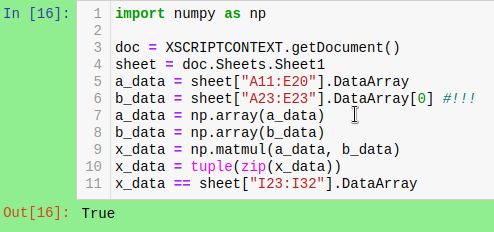“The API / UNO do not have an array concept.” However: the API uses the term “array” in a somewhat wayward manner as part of compound names such as “DataArray” or “FormulaArray” for certain sequences of elements that are themselves sequences of equal length. This representation of content is certainly often advantageous. However, Basic has an “array concept” and UserDefinedFunctions written in Basic receive data from cell ranges, or calculated intermediate results as two-dimensional arrays if so required. For the output of structured data by a UDF, the software now demands -without regard to concepts of the API- the 2D structure, and does not accept a structure corresponding to a DataArray. If results were calculated in this form, the support for the necessary conversion is missing.
Who can explain this to me well?
Did I miss related services?
To better explain my concern I now attach an example .ods also containing a bit of code for actual usage in the module ‘global’:
disaskQuestion88179explainingExample.ods (11.9 KB)
disask88179example.ods (19.3 KB)
Actually the fact that Calc UDF can’t return (to a sheet) the results they got by FunctionAccess calls to array functions was what remined me of the old issue: There are functions I would like to be able to modify concerning the “HOST-FOO-BAR” settings which unfortunately are global to (at least) any document while they should be modifiable per call.

